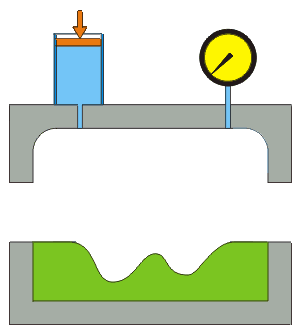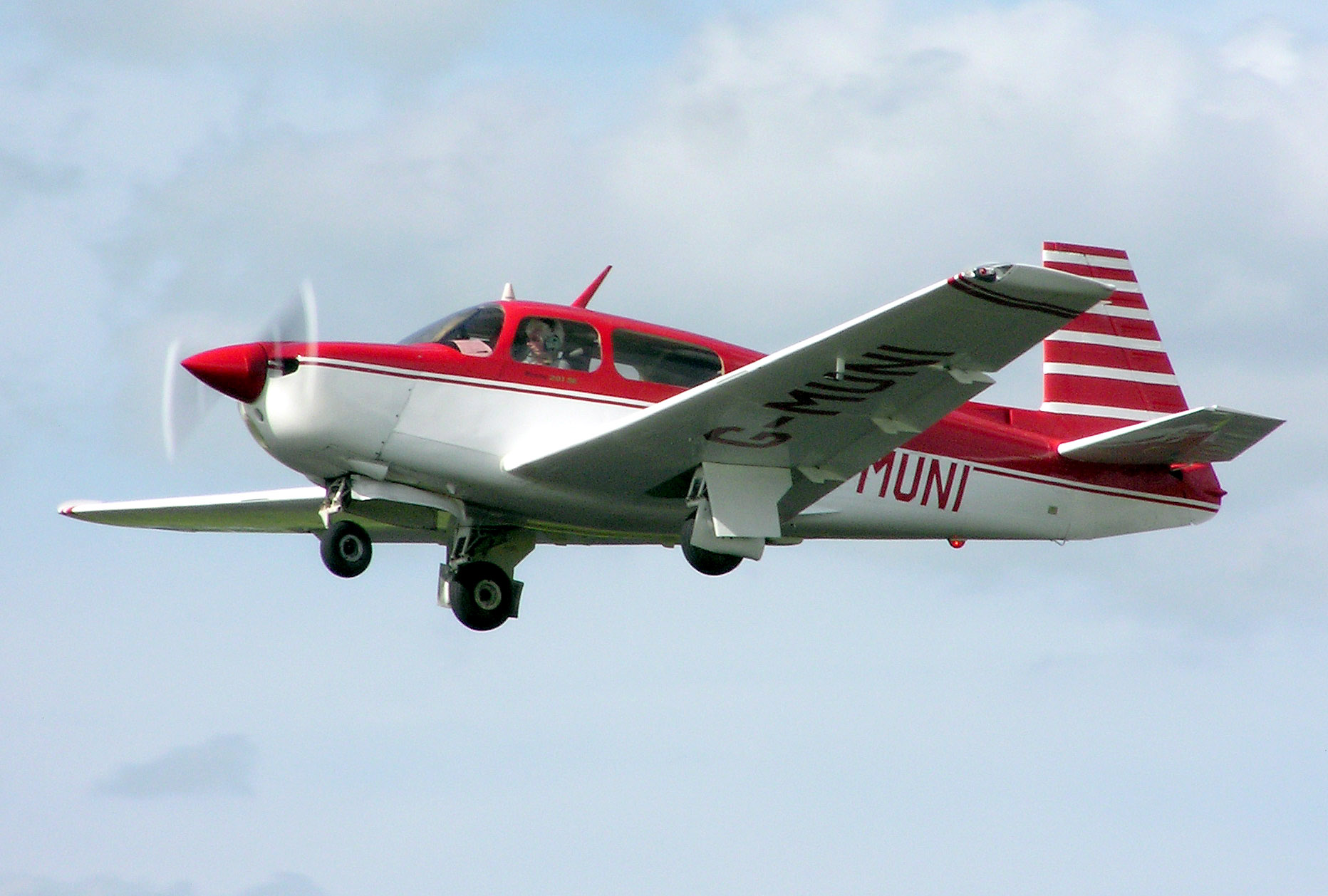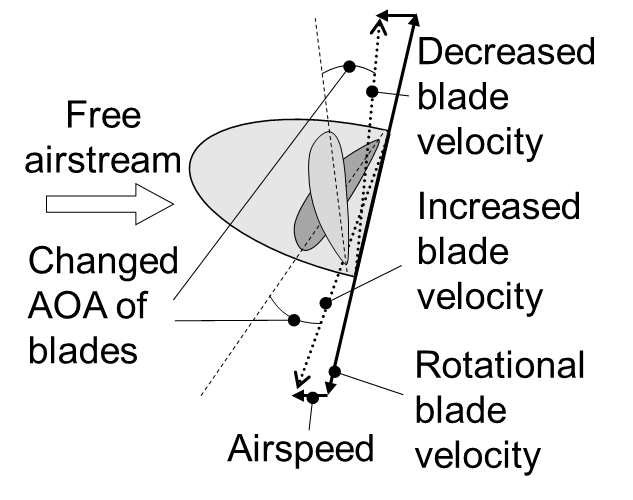|
Swearingen SX-300
The Swearingen SX-300 is a high-performance homebuilt aircraft, featuring two seats and developed by Ed Swearingen during the 1980s. The aircraft was offered as a kit, but this was not a comprehensive kit like contemporary designs, and its construction was beyond the abilities of the average amateur aircraft builder. The airplane features a six-cylinder engine. Design and development Citing the lack of advancement in aircraft performance since the 1930s, Swearingen started a new company to develop faster light aircraft designs. The new design was intended to be developed as a kit aircraft initially and then later to be type certified, although certification was never completed. The aircraft was designed in 1983, first flown on July 1, 1984 and initially designated as the S29-300, for ''Swearingen, 29th design, 300 horsepower''. The official company designation for the production kit aircraft is ''SX300'', although some owners have registered them as ''SX-300'' and ''SX 30 ... [...More Info...] [...Related Items...] OR: [Wikipedia] [Google] [Baidu] |
Homebuilt Aircraft
Homebuilt aircraft, also known as amateur-built aircraft or kit planes, are constructed by persons for whom this is not a professional activity. These aircraft may be constructed from "scratch", from plans, or from assembly kits.Armstrong, Kenneth: ''Choosing Your Homebuilt - the one you will finish and fly! Second Edition'', pp. 39–52. Butterfield Press, 1993. Peter M Bowers: ''Guide to Homebuilts - Ninth Edition''. TAB Books, Blue Ridge Summit PA, 1984. Overview In the United States, Brazil, Australia, New Zealand and South Africa, homebuilt aircraft may be licensed Experimental under FAA or similar local regulations. With some limitations, the builder(s) of the aircraft must have done it for their own education and recreation rather than for profit. In the U.S., the primary builder can also apply for a repairman's certificate for that airframe. The repairman's certificate allows the holder to perform and sign off on most of the maintenance, repairs, and inspections them ... [...More Info...] [...Related Items...] OR: [Wikipedia] [Google] [Baidu] |
Hydroformed
Hydroforming is a cost-effective way of shaping ductile metals such as aluminium, brass, low alloy steel, and stainless steel into lightweight, structurally stiff and strong pieces. One of the largest applications of hydroforming is the automotive industry, which makes use of the complex shapes made possible by hydroforming to produce stronger, lighter, and more rigid unibody structures for vehicles. This technique is particularly popular with the high-end sports car industry and is also frequently employed in the shaping of aluminium tubes for bicycle frames. Hydroforming is a specialized type of die forming that uses a high pressure hydraulic fluid to press room temperature working material into a die. To hydroform aluminium into a vehicle's frame rail, a hollow tube of aluminium is placed inside a negative mold that has the shape of the desired result. High pressure hydraulic pumps then inject fluid at very high pressure inside the aluminium tube which causes it to expand ... [...More Info...] [...Related Items...] OR: [Wikipedia] [Google] [Baidu] |
1980s United States Sport Aircraft
__NOTOC__ Year 198 (CXCVIII) was a common year starting on Sunday (link will display the full calendar) of the Julian calendar. At the time, it was known as the Year of the Consulship of Sergius and Gallus (or, less frequently, year 951 ''Ab urbe condita''). The denomination 198 for this year has been used since the early medieval period, when the Anno Domini calendar era became the prevalent method in Europe for naming years. Events By place Roman Empire *January 28 **Publius Septimius Geta, son of Septimius Severus, receives the title of Caesar. **Caracalla, son of Septimius Severus, is given the title of Augustus. China *Winter – Battle of Xiapi: The allied armies led by Cao Cao and Liu Bei defeat Lü Bu; afterward Cao Cao has him executed. By topic Religion * Marcus I succeeds Olympianus as Patriarch of Constantinople (until 211). Births * Lu Kai (or Jingfeng), Chinese official and general (d. 269) * Quan Cong, Chinese general and advisor (d. 24 ... [...More Info...] [...Related Items...] OR: [Wikipedia] [Google] [Baidu] |
NTSB
The National Transportation Safety Board (NTSB) is an independent U.S. government investigative agency responsible for civil transportation accident investigation. In this role, the NTSB investigates and reports on aviation accidents and incidents, certain types of highway crashes, ship and marine accidents, pipeline incidents, bridge failures, and railroad accidents. The NTSB is also in charge of investigating cases of hazardous materials releases that occur during transportation. The agency is based in Washington, D.C. It has four regional offices, located in Anchorage, Alaska; Denver, Colorado; Ashburn, Virginia; and Seattle, Washington. The agency also operates a national training center at its Ashburn facility. History The origin of the NTSB was in the Air Commerce Act of 1926, which assigned the United States Department of Commerce responsibility for investigating domestic aviation accidents. Before the NTSB, the Federal Aviation Administration's (FAA; at th ... [...More Info...] [...Related Items...] OR: [Wikipedia] [Google] [Baidu] |
G-force
The gravitational force equivalent, or, more commonly, g-force, is a measurement of the type of force per unit mass – typically acceleration – that causes a perception of weight, with a g-force of 1 g (not gram in mass measurement) equal to the conventional value of gravitational acceleration on Earth, ''g'', of about . Since g-forces indirectly produce weight, any g-force can be described as a "weight per unit mass" (see the synonym specific weight). When the g-force is produced by the surface of one object being pushed by the surface of another object, the reaction force to this push produces an equal and opposite weight for every unit of each object's mass. The types of forces involved are transmitted through objects by interior mechanical stresses. Gravitational acceleration (except certain electromagnetic force influences) is the cause of an object's acceleration in relation to free fall. The g-force experienced by an object is due to the vector sum o ... [...More Info...] [...Related Items...] OR: [Wikipedia] [Google] [Baidu] |
Tricycle Landing Gear
Tricycle gear is a type of aircraft undercarriage, or ''landing gear'', arranged in a tricycle fashion. The tricycle arrangement has a single nose wheel in the front, and two or more main wheels slightly aft of the center of gravity. Tricycle gear aircraft are the easiest for takeoff, landing and taxiing, and consequently the configuration is the most widely used on aircraft.Crane, Dale: ''Dictionary of Aeronautical Terms, third edition'', page 524. Aviation Supplies & Academics, 1997. Aviation Publishers Co. Limited, ''From the Ground Up'', page 11 (27th revised edition) History Several early aircraft had primitive tricycle gear, notably very early Antoinette planes and the Curtiss Pushers of the pre-World War I Pioneer Era of aviation. Waldo Waterman's 1929 tailless '' Whatsit'' was one of the first to have a steerable nose wheel. In 1956, Cessna introduced sprung-steel tricycle landing gear on the Cessna 172. Their marketing department described this as "Land-O-Mati ... [...More Info...] [...Related Items...] OR: [Wikipedia] [Google] [Baidu] |
Wet Wing
A wet wing (also referred to as ''integral fuel tanks''Crane, Dale: ''Dictionary of Aeronautical Terms, third edition'', page 557. Aviation Supplies & Academics, 1997. ) is an aerospace engineering technique where an aircraft's wing structure is sealed and used as a fuel tank. The use of wet wings has become common among civilian designs, from large transport aircraft, such as airliners, to small general aviation aircraft. Several military aircraft, such as airlifters and aerial refueling tankers, have incorporated the technique as well.Whitford 2004, p. 153. A number of strike aircraft, such as the Grumman A-6 Intruder The Grumman A-6 Intruder is an American twinjet all-weather attack aircraft developed and manufactured by American aircraft company Grumman Aerospace and operated by the U.S. Navy and U.S. Marine Corps. It was designed in response to a 195 ..., have also been furnished with wet wings. While it is technically feasible, studies have found it generally impract ... [...More Info...] [...Related Items...] OR: [Wikipedia] [Google] [Baidu] |
P-factor
P-factor, also known as asymmetric blade effect and asymmetric disc effect, is an aerodynamic phenomenon experienced by a moving propeller,) where the propeller's center of thrust moves off-center when the aircraft is at a high angle of attack. This shift in the location of the center of thrust will exert a yawing moment on the aircraft, causing it to yaw slightly to one side. A rudder input is required to counteract the yawing tendency. Causes When a propeller aircraft is flying at cruise speed in level flight, the propeller disc is perpendicular to the relative airflow through the propeller. Each of the propeller blades contacts the air at the same angle and speed, and thus the thrust produced is evenly distributed across the propeller. However, at lower speeds the aircraft will typically be in a nose-high attitude, with the propeller disc rotated slightly toward the horizontal. This has two effects. Firstly, propeller blades will be more forward when in the down posit ... [...More Info...] [...Related Items...] OR: [Wikipedia] [Google] [Baidu] |
Lycoming IO-540
The Lycoming O-540 is a family of air-cooled six-cylinder, horizontally opposed fixed-wing aircraft and helicopter engines of displacement, manufactured by Lycoming Engines. The engine is a six-cylinder version of the four-cylinder Lycoming O-360. Design and development Producing between these engines are installed in a large variety of aircraft. The main competitors are the Continental IO-520 and IO-550 series. An AEIO version was developed for high-performance competition aerobatics aircraft. Starting at the power was eventually increased to . The AEIO-540 family has achieved considerable success in aircraft such as the Extra 300, CAP 232, and Zivko Edge 540. Variants All engines have an additional prefix preceding the 540 to indicate the specific configuration of the engine. The numerous engine suffixes denote different accessories such as different manufacturers' carburetors, or different magnetos. ;O-540 :Standard, direct-drive, normally aspirated Opposed engin ... [...More Info...] [...Related Items...] OR: [Wikipedia] [Google] [Baidu] |
Piper PA-30 Twin Comanche
The Piper PA-30 Twin Comanche is an American twin-engined cabin monoplane designed and built by Piper Aircraft. It was a twin-engined development of the PA-24 Comanche single-engined aircraft. A variant with counter-rotating propellers was designated the Piper PA-39 Twin Comanche C/R.Murphy, Tom and Hans Halberstadt, ''Illustrated Piper Buyer's Guide,'' 1993, MBI Publishing / Motorbooks International, Osceola, WisconsinIbold, Ken, ed., ''Aviation Consumer's Used Aircraft Guide, 9th Edition,'' vol. 2, 2001, Belvoir Publications, Greenwich, ConnecticutHarris, Richard"Piper Aircraft: a quick history,"'InFlight USA'' magazine, 2000-2001, as revised and expanded to 2014, on ''Aviation Answer-Man,'' website, retrieved May 11, 2017 Development The Piper PA-30 Twin Comanche was designed as a twin-engined variant of the Piper PA-24 Comanche. A complex light twin, with retractable landing gear, seating 4 (in original models) to 6 (in later models), and cruise speeds ranging from 160 ... [...More Info...] [...Related Items...] OR: [Wikipedia] [Google] [Baidu] |
Composite Material
A composite material (also called a composition material or shortened to composite, which is the common name) is a material which is produced from two or more constituent materials. These constituent materials have notably dissimilar chemical or physical properties and are merged to create a material with properties unlike the individual elements. Within the finished structure, the individual elements remain separate and distinct, distinguishing composites from mixtures and solid solutions. Typical Materials, engineered composite materials include: *Reinforced concrete and masonry *Composite wood such as plywood *Reinforced plastics, such as fibre-reinforced polymer or fiberglass *Ceramic matrix composites (composite armor, composite ceramic and metal matrices) *Metal matrix composites *and other Advanced composite materials (engineering), advanced composite materials There are various reasons where new material can be favoured. Typical examples include materials which are less ex ... [...More Info...] [...Related Items...] OR: [Wikipedia] [Google] [Baidu] |
Engine Cowling
A cowling is the removable covering of a vehicle's engine, most often found on automobiles, motorcycles, airplanes, and on outboard boat motors. On airplanes, cowlings are used to reduce drag and to cool the engine. On boats, cowlings are a cover for an outboard motor. In addition to protecting the engine, outboard motor cowlings need to admit air while keeping water out of the air intake. Etymology "Cowling" comes from "cowl", which originated from Middle English coule, from Old English cūle, from earlier cugele (“hood, cowl”). This, in turn, came from Ecclesiastical Latin cuculla (“monk's cowl”), from Latin cucullus (“hood”), of uncertain origin. In aviation In aviation, a cowling may be used for drag reduction or engine cooling by directing airflow. Examples in aviation include the NACA cowling and Townend ring. On an airplane, the cowling may also cover part of the fuselage, the nacelles, the engine mount and part of the cockpit.Aviation Machinist's Mates' Manua ... [...More Info...] [...Related Items...] OR: [Wikipedia] [Google] [Baidu] |








